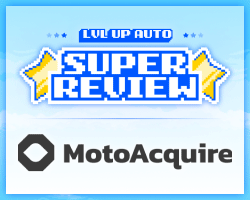Nine Dirty Little Secrets of Automotive SEO & SEM:
The Pitfalls of the ‘Set it and Forget it’ Approach to Dealer Search
There are more than a few Dirty Little Secrets when it comes to dealers and their use of search engines to drive quality traffic to their websites. Secrets, of course, kept from the dealers and their teams by their search “partners.”
If you’re like most dealers, you’ve got better things to do than monitor this spend. So, you likely take a ‘set it and forget it’ approach to your store’s search efforts. An approach, we’ve discovered, that can cost you tens of thousands of dollars in wasted spend and outright fraud each year. (Don’t believe me? Check out this recent example shared on the DealerRefresh Forums.)
Understanding the Dirty Little Secrets (DLS) your vendors don’t want you to know will help you and your team uncover the waste and fraud; and allow you to leverage search in ways that drive real results for your dealership:
DLS #1: Pay-Per-Click Transparency
The secret here is that there is no real transparency into what the average Search Engine Marketing (SEM) vendor provides their dealer-clients. Sure, there are reports with cool graphs and lots of talk about impressions, click-through rates and cost-per-click; but, the fact is that the average dealer has no idea if there are genuine returns from their SEM efforts.
While I could write an entire book on what you should be asking of your SEM vendor, the most important things you can do to start to gain some real transparency into your monthly spend are:
- Pay Google directly for your AdWords usage. (This way you’ll know exactly how much you’re paying the vendor for their management fee.); and
- Ask your vendor to tell you how many cars you sold last month from your SEM efforts and which keywords drove those sales. (When your PPC provider properly sets up Google Analytics tracking and your Google Search Console – and perhaps even adds some high-converting landing pages – they should be able to help you get much of this information.)
DLS #2: Search Optimization?
If you think the lack of transparency that exists with most SEM reporting is bad, wait until you take a true deep-dive into your Search Engine Optimization (SEO) vendor’s reports. If you do, you’ll see more pretty graphs and lots of talk about organic traffic, page views, conversions, keyword performance, domain authority and inbound links.
Now, while all of these can be indicators of their ability to improve your website’s Search Visibility, these metrics can also be driven by multiple factors completely outside of their control. Moreover, unless you can view the trends (weekly, for example) in your site’s relative ranking (that is, how you compare to the competition) for the keywords that matter, you have no idea whether their SEO efforts are having a positive or negative impact on your website’s Search Visibility.
If you don’t know if their efforts are working, how can you hold them accountable? You can’t, so start demanding better reporting that shows your dealership versus Joe’s Honda using real, in-market searches for low-funnel keywords like “Honda dealer near me.”
The dirty little secret here is that most SEO that dealers buy is garbage or non-existent. You’re paying a monthly fee to see meaningless data sprinkled into pretty reports.
DLS #3: The High-Converting Keywords
Most SEM vendors (and Google, for that matter) don’t want you to know that when bidding on versions of your dealership’s name (called “branded campaigns”) you’re most often paying to generate traffic you would’ve received anyway.
Moreover, you’re usually kept in the dark about the fact that the overwhelming majority of your qualified paid clicks come from those branded terms. That is, when you deep-dive into your SEM-generated calls & leads (on the keyword level) you’ll see that most of these come from versions of your dealership’s name.
This doesn’t mean you shouldn’t run branded campaigns, but that you should be completely aware of your ROI for this and all campaigns. Additionally, you may want to look at the branded campaign effort separate from all others. Chances are, the ROI won’t be there for most of your PPC spend when you don’t allow all the results to be comingled with your (always high-converting) branded campaign.
DLS #4: Competing with the OEM
Do a Google search in your market for a research keyword like “2018 Camry.” (This is considered a research keyword, because most people typing only “Year + Model” into Google are still researching the vehicle. That is, they are still relatively high in the sales funnel.)
Who’s bidding on this keyword and occupying the top paid position? Most likely, it’s the manufacturer or your Tier 2 agency. If you’re a Toyota dealer bidding here, you’re competing against Tiers 1 and 2; and those tiers always enjoy lower costs-per-click when it comes to research keywords. This means your ad is probably third on the page; and any clicks you receive are going to be expensive relative to what a lower-funnel version of this keyword might be (like “2018 Camry price”).
If you have an unlimited PPC budget, keep on bidding on research keywords. However, if there is a cap to your spend, then you should focus your bidding on keywords used by lower-funnel prospects.
DLS #5: All Search is Local (and Competitive)
Check out the SEO reports your vendor sends you. Do they include search terms like “Ford dealer near me” and simply “Ford dealer;” or, do all the terms have some geographical qualifier like “Ford dealer near Irving?”
If the reports contain only the latter, then you have no idea where you rank when a mobile customer located in your PMA (Primary Market Area) searches for a Ford dealer. All you know is that according to some server located somewhere else, you rank for your brand and city. All search is local; and you’re not getting local results.
More importantly, do these reports contain your relative position over time versus your competition? They don’t? Too bad, because if there were no competitors, you wouldn’t need SEO services, right? Unfortunately, the reports most SEO vendors provide give you zero insight into how your Search Visibility is improving or declining over time relative to the competition.
DLS #6: Search Involves Third Parties
To hear some search vendors tell it, SEO and SEM are the “First Party” and “Do It Yourself” marketing models so many (misguided) dealers dream of achieving. They’ll tell you to “stop dealing with those third-party providers and take control of your marketing!” Their point is that you should “cut out the fat by cutting out the middleman and just do it all yourself” (and spend lots of money with them, of course).
There’s just one problem: both SEO and SEM involve third parties… and your SEM vendor is possibly the fattest middleman you’ll ever meet.
There are “third-party” providers in everything you do with your marketing budget; but, especially when it comes to paid search and display. Your SEM provider basically buys a product from Google (an unavoidable middleman between you and the consumer) – a product that you could buy directly from Google yourself – and then resells it to you at a markup.
That’s pretty much the definition of a middleman.
This is not to say that SEM providers don’t add value as middlemen – many do. This is just a warning not to fall for the sales pitch that “all third parties and middlemen are bad,” when the only bad middleman might be the one pitching you SEM.
DLS #7: Ad Fraud is Real & Pervasive
It’s estimated that digital ad fraud will cost advertisers $19 billion this year. That’s 9% of the expected digital marketing spend!
If you’re using a reputable and honest SEM provider, you’re still on the hook for some of that $19 billion – it’s, unfortunately, unavoidable. Of course, the good news is that ad fraud will likely represent less than 1% of your budget if your SEM has your back (and you follow standard SEO and SEM best practices).
But, what if your SEM vendor is not so honest?
I won’t bore you with the details, but just in the last three months I’ve seen massive overcharging by SEM providers. From PPC admin fees in the 40-50% range to display advertising markups that should be illegal (above 500%!). Oh, and none of this was disclosed to the dealer-clients. As far as they knew, their SEM providers were among the best. (Sometimes, because they’re approved by the OEM.)
DLS #8: Google is Not Your Friend
Google, when it comes to PPC and Display, is not your friend; they are a vendor. A vendor, by the way, that wants to (not surprisingly) make money. This doesn’t make them bad, it just means that we need to keep this in mind when listening to Google’s advice on anything Google sells.
Just like when the rep from the local billboard company is sitting in front of you extoling the virtues of outdoor signage, any advice from Google on how to spend your marketing budget should be taken with a big grain of salt.
Google, their Premier Partners and every SEM vendor out there wants to make the most money they can off you. That’s okay, that’s how capitalism works. The key is to understand this from the beginning (as you do with the billboard company).
DLS #9: Not Every Dealer Needs to Buy SEO & SEM
Yep, you read that correctly: Not every dealer needs to spend money on SEO or SEM – despite what Google, your OEM or that vendor who spoke to your 20 group claims.
SEO, for example, is meant to improve your Search Visibility on the keywords for which you should be ranking highly. It’s not, despite what Black Hat SEO companies will tell you, meant to rank you #1 for “Ford Dealer” nationwide – only in your home market.
So, if you’re the Ford dealer in Columbus, Nebraska – and the nearest competing Ford dealer is over an hour away – you can likely skip the extra money for Search Engine Optimization. Google is probably ranking you for all the keywords you deserve already; and spending more on SEO won’t do much to drive incremental qualified website visits.
But, if you’re the Ford dealer in Naperville, Illinois and the nearest competing Ford dealer is eight miles away; you probably need to hire one of the better SEO providers out there.
For SEM, the scenarios that determine whether you should be spending and how much are a bit more complicated. But, suffice it to say that not every dealer needs to be shelling out thousands every month on paid search and display. Only by properly tracking and measuring all your digital marketing will you determine whether you’re spending too much, too little or the right amount on SEM.
… On, and it’s that proper tracking and measuring that will break you out of the “set it and forget it” approach and reveal all the dirty little secrets of automotive search.
Good selling!










Current Discussion Topics